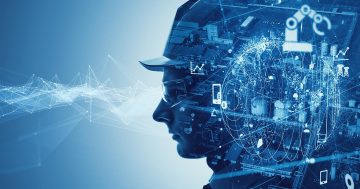J Jerry Moses* says continuous learning can help the workforce become more responsive to change in the organisation and the market and suggest ways to promote this culture with employees.
 As companies re-examine their skills and learning agendas in the context of the pandemic-led disruption, here’s a useful way to think about building a culture of continuous learning in your company.
As companies re-examine their skills and learning agendas in the context of the pandemic-led disruption, here’s a useful way to think about building a culture of continuous learning in your company.
A study by the Korn Ferry Institute shows that 75 per cent of the employees believe that their organisation doesn’t have an aggressive learning culture.
In every sector, there’s rapid digital change, pressuring organisations to think about how they can be successful in the present as well as in the future.
So, there’s a need to think about the learning challenge at the individual level, team level, and the organisational level.
Research suggests that “Learning Agility, Innovation, and Customer Input” top the business impact of a continuous learning culture.
When we think about continuous learning, we’re talking about constant development of skills, and behaviours that are aligned with the organisation’s strategy.
It is the connected, continuous nature of learning that can help the workforce become more responsive to change in the organisation and the market.
In practice, “It means employees have the access to the right resources, knowledge, network, learning strategies, feedback,” says Heide Abelli, customer market leader and general manager at Skillsoft.
“It also means there are the right reward systems, rich opportunities for self-development, and support.”
It doesn’t just stop at the individual level; it includes trans-personal and organisational learning.
Having the right learning mindset is the base on which one can build a continuous learning culture.
This means having an openness to see mistakes, willingness to take risks, and having a growth mindset.
Apart from having the right mindset, there are three pillars that are essential to building learning agility:
- Technology infrastructure
Do you have the right systems and platforms in place that is reflective of the current needs and experience of the employees?
- Organisational support
Do you have the right processes and structures in place that can support the culture?
- Data, measurement and metrics:
Are there enough data sources that are being tracked that is meaningful for measuring the progress of the company’s journey?
On top of all of these focus areas is a manager’s support and behaviour that’s essential to continuously improve throughout the journey.
Here are the right essential features of a continuous learning culture:
- Big picture = Individual
There’s a need to align personal and organisational goals when it comes to learning.
The learning roadmap also needs to be personalised to the needs of the employee.
- Individuals are assigned tasks to practice learning
Learning doesn’t just stop at the stage of course review; employees need to be assigned tasks, projects, and assignments that can challenge their learning.
- Mistakes should be a feature of the learning process
Whether it is through experimentation or risk taking, there’s a need to ensure that employees can make mistakes through their learning journey.
This psychological safety can accelerate and boost the learning process.
- Make individuals accountable for learning and performance
While driving home the message that learning is important, it is essential to clearly state that learning equals success.
Further, leaders need to take note of the application of learning and encourage their employees in the process.
- Ensure that there are minimal constraints to learning
Whether a given task is unclear, or there are pressing workplace deadlines, there’s a need to ensure that learning is not hindered by workplace barriers.
- Encourage new ideas
Employees need to feel like their contributions are valued and encouraged in the workplace.
A special focus on new contributions will further boost experimentation and lead to new ideas coming to the surface.
- Leadership support
When leaders make the time for learning and they’re able to provide support, it motivates employees to learn and also shows employees that they will be supported in the process.
- Policies and practices
The effective use of training is supported by policies and practices that are geared at improving experimentation, risk taking and reducing any fear of learning.
Building a continuous learning culture is not a one-time activity.
There’s a need for continuous assessment, reflection and feedback to build workplace practices that are sustainable in the long run.
While technology is a key enabler in the journey, companies that are able to link their learning strategy to growth opportunities are far more likely to sustain a continuous learning culture.
*J Jerry Moses is a Content Manager at People Matters. He can be reached at [email protected]
This article first appeared at peoplematters.in











